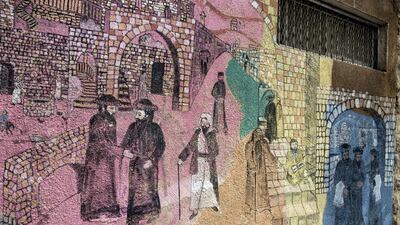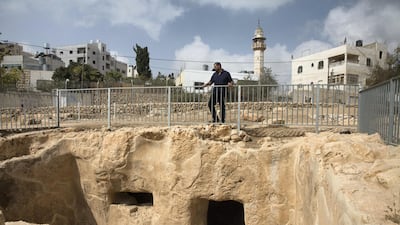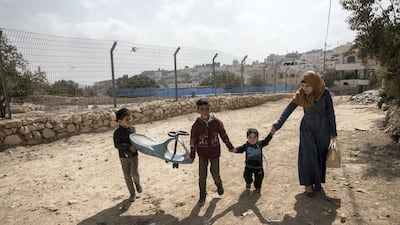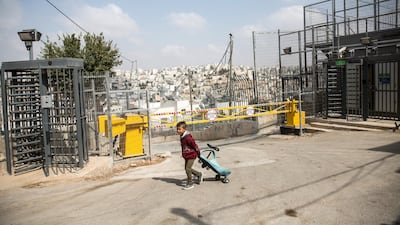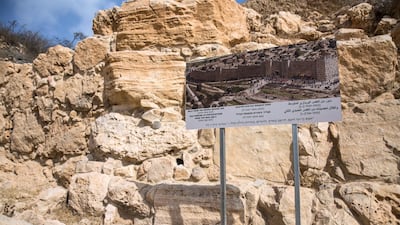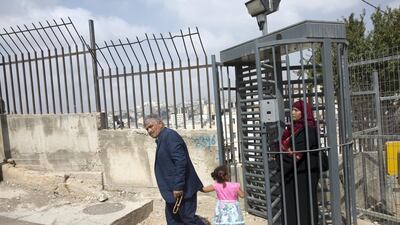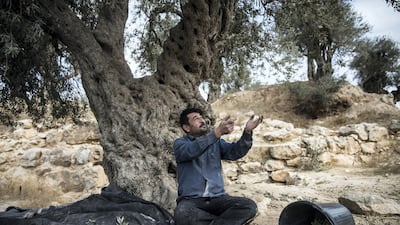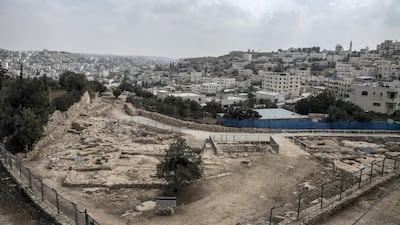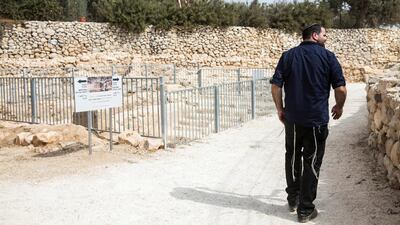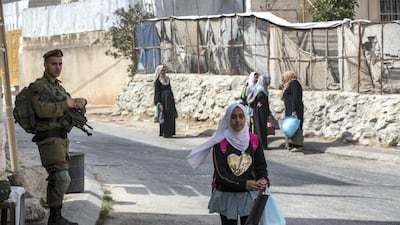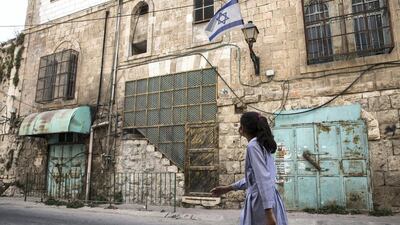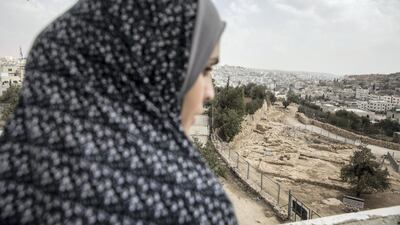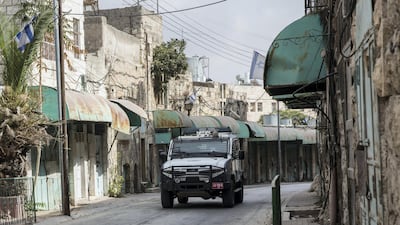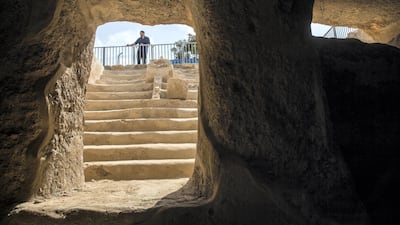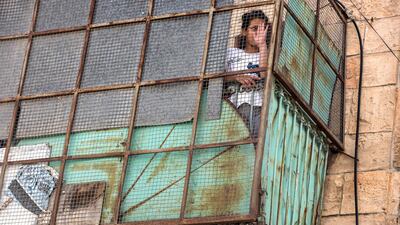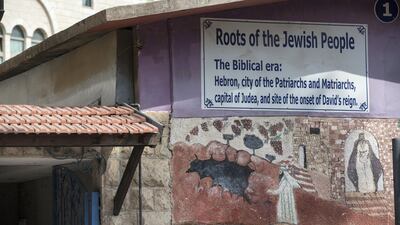In the West Bank city of Hebron two excavated ditches set amid uneven and ungravelled walking spaces are cordoned off by flimsy fences.
Signs in Hebrew, English and Arabic inform onlookers that the steps that descend into the trenches lead to Jewish ritual baths dating back to the early Roman period in the first century BCE - but from above the newest addition to Israel's illegal settlement enterprise proves less than impressive.
"These ritual baths are testament to the fact that in that period, Jews lived here," Haim Blycher, a Jewish settler visiting the site said. "A ritual bath is something that belongs to Jews."
With Palestinian children forced to go through checkpoints on their way to school, their shops shuttered for years - ostensibly to protect settlers - and police and army vehicles on constant patrol, indications of encroaching Israeli occupation are everywhere in Hebron.
But Israeli control, in place since the 1967 Arab-Israeli war, took on an added facet this month.
At the impetus of settlers, the government and army opened an archaeological tourist park last week smack in the middle of the Tel Rumeida neighbourhood - an enclave that houses 50 Palestinian families as well as about 20 of the most militant settler families in the West Bank.
_________
Read more:
Breaking the Silence about Israel's occupation of Hebron
Palestinian shot dead after stabbing Israeli soldier in Hebron
Elias and Yousef Anastas: the artisans mastering musical chairs
West Bank village braces for another two-state death blow
_________
Despite their demographic disadvantage, the settlers are bent on underscoring Jewish claims to Hebron and transforming what they revere as the city of the biblical patriarchs into a Jewish area. They and the government of Prime Minister Benjamin Netanyahu view tourism and archaeology as a way to market the settler penetration and in the process gnaw away at Hebron's historic Palestinian character and status as a city cherished by Muslims.
"The site tells the real story by which the Jewish people were born and lived thousands of years until it was expelled," said Haim Blycher, a lawyer for the settlers who was active in the excavations. "Certainly, when people are exposed to the history of Hebron, it strengthens the tie of the Jewish nation and influences views among the Jewish people and the whole world."
Hebron once had a 500-strong centuries-old Jewish community whose presence ended in 1929 when 67 of its members were massacred by local Palestinians amid rumors that Jews were threatening Islam's third holiest site, Al Haram Al Sharif in Jerusalem - one of Mr Blycher's ancestors was among the dead.
After Israel occupied the city in 1967, messianic Jewish settlers moved into the area. They claimed they were there to restore Jewish life to Hebron.
But their extremism - many of them sympathised with a settler who massacred 29 Palestinians at mosque prayers in 1994 - alienated them from part of the Israeli public. Tourism could be a means of redressing this and mainstreaming them.
Despite a festive opening ceremony last week - from which Arab residents were excluded - the site, administered by the Israel Nature and Parks Authority, offers just two tours a week.
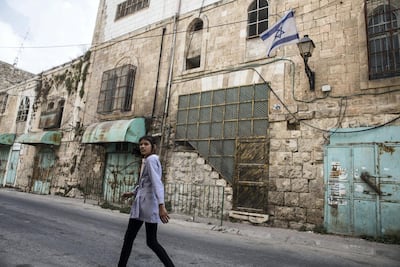
When The National visited, soon after its opening, the main gate was closed and Mr Blycher, the lawyer, was the only person there. Only a fence separates the site from Palestinian homes. The call to prayer resounded from two nearby mosques.
But Noam Arnon, a spokesman for the settlers, is sure it will grow and draw a large numbers of Israelis. He says he hopes that it can eventually attract more than one hundred thousand people a year.
But Palestinians in Tel Rumeida are wary.
"No, no, no, this is not a Jewish place," said Raed Abu Salih, 48, as he picked olives near the site. "It's Canaanite, not Jewish, but they falsify history for their interests. They are using archaeology as an excuse for settlement," he said referring to a group of ancient indigenous populations in the area.
He tapped on a stone. "If this stone could talk, it would say 'I am Palestinian'. We're the original inhabitants."
The army and government also say the archaeology shows the area was and is Jewish in character.
Deputy defense minister Eli Ben-Dahan told the dedication ceremony: "We are standing here in the place of the birth of Jewish history in the city of the patriarchs and opening the place to which our children, grandchildren and future descendants will learn the most important thing - that Hebron is the eternal city for the people of Israel, the eternal people."
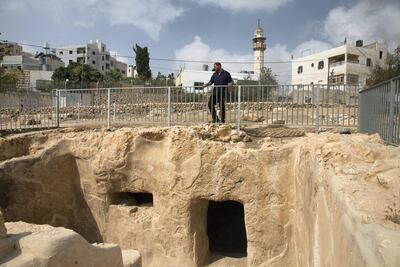
But Nazmi Jubeh, a historian at Bir Zeit University near Ramallah, says it is preposterous to label the multi-layered site as purely Jewish.
"They are just selecting pieces. To select just a certain period that could be one or two centuries out of 3,000 years and to call the site a Jewish site is really a joke," he said, adding that he would like to see the site but it is off limits to Palestinian archaeologists.
Mr Arnon, the settler spokesman, responded that anyone can visit as long as they are not deemed a security threat.
Israel's left-wing Peace Now movement also says the government is misrepresenting the past.
"This is another extreme example of the use of archaeology as an ideological tool to gain control over and claim ownership of land as has been done in many places in Israel and the occupied territories," said a statement. "The archaeological site is a settlement in every respect, as it is intended to be."
Peace Now says that instead of bringing settlers to live there, the tourists will be the ones to fill the function of Israeli presence at the site.
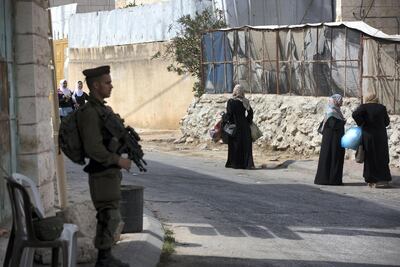
The site also displays what archaeologists say is a pottery workshop and kiln, as well as a wine press and an olive press from the late Roman and Byzantine periods. The excavations were conducted by Ariel University, which is located on a settlement in the northern West Bank.
Issa Amro, a non-violent activist against the occupation in Hebron, predicted that the new tourist site will make daily life for Palestinians even more difficult. "People in the area are severely restricted. With this touristic site, it means you will have more closures, more restrictions and more security measures against Palestinians."
"They will use tourists to strengthen the settlers and to change the Palestinian identity of the city," he added. "Instead of opening touristic sites, they should reopen the closed markets and closed streets and let Palestinians use their city normally, not take it over from them."
